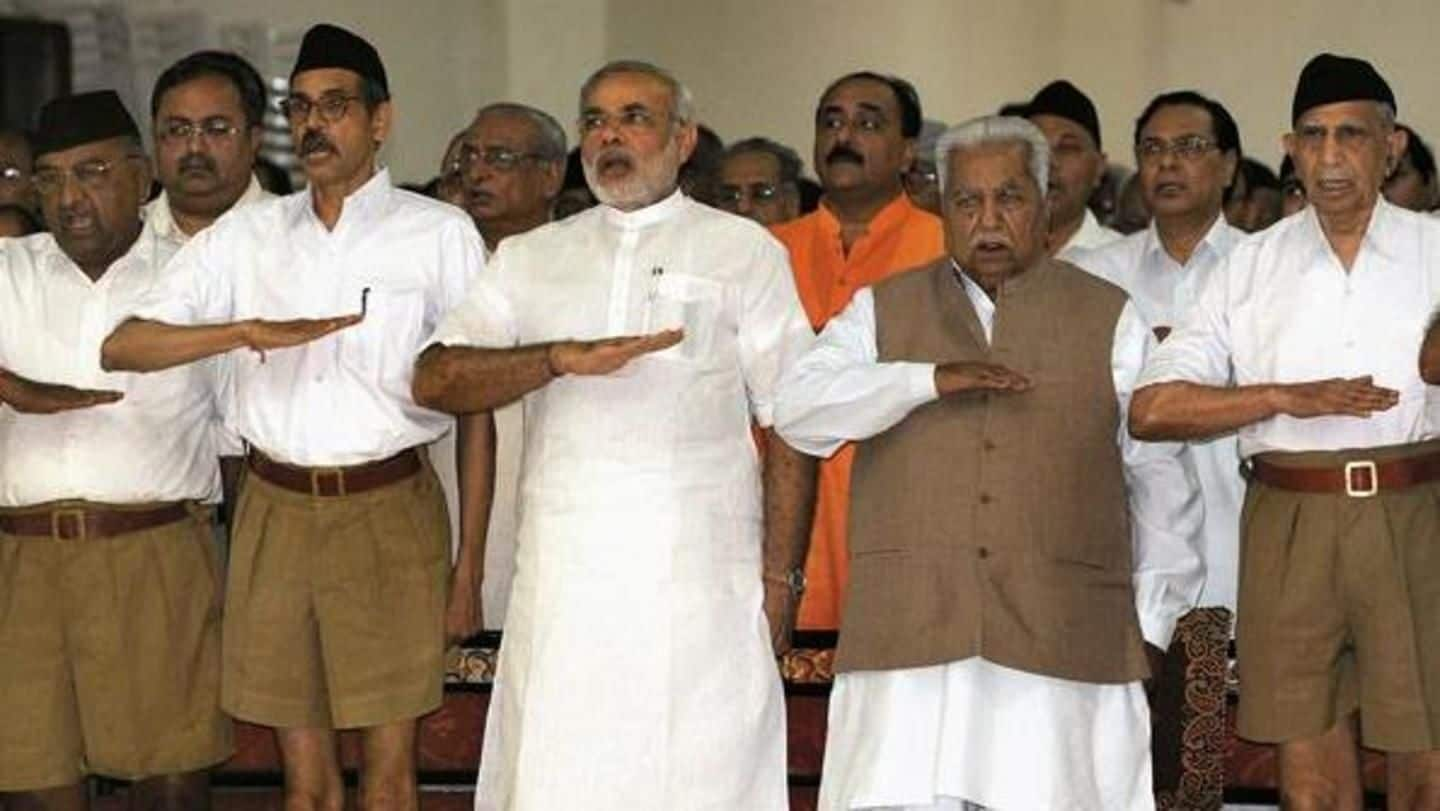
9 interesting facts you wouldn't know about RSS
What's the story
RSS, since its inception, has failed to detach controversies from its periphery. Some claim the Sangh's idea of Hindutva is a blot on India's secularism, while others believe the Sangh is indispensable for preserving India's rich history. With RSS once again in the spotlight following Dr. Pranab Mukherjee's visit to its HQ in Nagpur, we tell you 9 interesting facts about this contentious organization.
Inception
1. Inspired by Veer Savarkar
The Rashtriya Swayamsevak Sangh was formed in September 1925 by Dr. Keshav Baliram Hedgewar, who was a physician and was commonly known as 'Doctorji.' Hedgewar was inspired by Veer Savarkar's ideology of consolidation of Hindutva, and the sporadic Hindus-Muslim violence in the backdrop triggered the formation of RSS. Thus, the organization of Hindus became RSS's top priority.
Mixed reactions
2. Boycotting the freedom movement
The RSS is incessantly blamed for keeping an arms distance from Mahatma Gandhi's freedom struggle. But the claims have been denied by RSS ideologue Rakesh Sinha who blames the misunderstanding on the biased textual representation of RSS. According to Hedgewar's biography published by RSS, he had kept the Sangh away from the 1930 Salt Satyagraha but allowed individual involvement.
Ups and downs
3. Bittersweet relationship with Gandhi and Patel
Both Bapu and Patel had mixed relationship with RSS. In 1934, Gandhi said in an RSS camp, "I was very much surprised by your discipline and absence of untouchability." Ironically, Gandhi had also compared RSS with Hitler's Nazis. Sardar Patel, who lifted the ban on RSS in 1949 had indirectly blamed the Sangh for Gandhi's assassination and said, "RSS men distributed sweets after Gandhiji's death."
Details
4. Differences with Nehru
As PM, Jawaharlal Nehru had banned the RSS over suspicion of its involvement in Gandhi's assassination, but following lack of evidence, the ban was lifted. However, Nehru also appreciated Sangh's hard work at the border during the 1962 war with China. To commemorate their contribution, he invited 3,000 Sangh volunteers to the 1963 Republic Day parade.
Tumultuous
5. Dynamics with Veer Savarkar
According to Sinha, RSS and Hindu Mahasabha (HMS) had a tumultuous relationship and disagreed on several issues. Nathuram Godse (Gandhi's assassin) once wrote to Savarkar complaining that RSS was wasting the energy of Hindu youth. But former history professor at JNU, Mridula Mukherjee argues that the RSS and the HMS were as close as "the RSS and the BJP now."
Details
6. RSS during 1947, 1962 and 1965
Notably, acclaimed journalist and RSS critic, Khushwant Singh had acknowledged the help extended by the RSS to the Sikhs during the 1984 riots. Further, during partition, RSS members were instrumental in organizing relief camps for refugees from Pakistan. In the 1962 India-China war, RSS helped Indian soldiers and citizens in the North East for which they were also hailed by Nehru, as mentioned earlier.
Millions
7. World's largest NGO
With over 5 million active members (swayamsevaks) and over 100 affiliates, RSS is the world's biggest NGO. The organization operates over 57,000 shakhas across the country, up from 45,000 in 2010. Critics claim that the rise of BJP at the Centre has led to this unprecedented growth, but RSS claims that Kerala has the highest number of shakas (over 4,500), without any BJP connection.
Information
8. Has been banned thrice since Independence
RSS has been banned thrice since Independence. First ban was in 1948, after Gandhi's assassination. The second ban was imposed during the emergency when many other outfits were also banned. The last ban on RSS was imposed in 1992, after the demolition of Babri Masjid.
Details
9. Cut to 2018: Changes under current head, Mohan Bhagwat
Mohan Bhagwat, who became the RSS Sarsanghchalak (chief) in 2009 has brought some obvious changes in the Sangh. He has welcomed grassroots leaders from Opposition parties in RSS. He also replaced shorts with trousers and encouraged social media use. Bhagwat has tried to enhance flexibility in the RSS and capped the age of 75 for holding any office across the Sangh parivar.